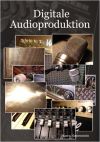Konzeption und Bewertung digitaler Produktionsprozesse am Beispiel der Eigenkomposition eines Rocksongs
© 2006 Marco Nassenstein M.Sc.
https://n7.eu
Dieses Werk ist für den privaten Gebrauch freigegeben.
Alle genannten Markennamen sind Eigentum ihrer jeweiligen Inhaber.
Inhaltsverzeichnis
Abbildungsverzeichnis
Abkürzungsverzeichnis
| ASIO: Audio Stream Input/Output BPM: Beats Per Minute DI: Direct Injection EQ: Equalizer FFT: Fast Fourier Transformation GUI: Graphical User Interface MIDI: Musical Instrument Digital Interface PA: Public Address Pan: Panorama PCM: Pulse Code Modulation PFL: Pre Fader Listen VST: Virtual Studio Technology WAV: Wave XLR: Xternal, Live, Return |
Abstract
The purpose of this thesis is to show the conception and the workflows of digital audio production processes, using the recording software Samplitude for the operating system Windows XP, exemplified on a rock song with the name Far Away. It's target is to name the essential actions which record the different sound sources one after another, both digital and analog, mix them within the computer and eventually bond them to one euphonious audio file. The equipment, effects, file formats and procedures will be equally explained, as well as the corresponding counterparts in the analog audio recording world. Furthermore, a short comparison of advantages and disadvantages of analog and digital production processes will be drawn, not only regarding the result, but also with regard to psychological and haptic aspects. The conclusion will rate the possibilities and limitations of digital recording techniques, and also the outcome of the example song.
• Vorwort • Einleitung • Das Lied Far Away • Aufnahme • Mix • Endmix • Vergleich Analog – Digital • Schlusswort |
Auch als Printausgabe erhältlich:

Kaufen auf Lulu.com
Alternativ steht das komplette Werk auch als PDF zum Download zur Verfügung:
https://n7.eu/download/papers/digitale_audioproduktion.pdf
Den Song Far Away kann man hier im MP3 Format herunterladen (11 MB):
https://n7.eu/download/far_away.mp3
Literaturverzeichnis
• Collins, Mike, A Professional Guide to Audio Plug-ins and Virtual Instruments, Focal Press, 2003, ISBN: 0240517067
• Garba, E. J., Computer Music: Rhythm Programming, Processing and Mastering, Trafford Publishing 2003, ISBN: 141201588X
• Gibson, Bill, The Audiopro Home Recording Course, Hal Leonard Pub Co., 1999, ISBN: 0872887154
• Häger, Jan, o. Datum, "Technisches Prinzip" <https://n7.eu/Edrums/Technisches_Prinzip>
• Magix Samplitude Hilfe, o. Datum, "Samplitude Online Hilfe Version 8.0, Arbeiten mit Samplitude > Effekte > Beschreibung > Raumsimulator"
• Onlineenzyklopädie Wikipedia, o. Datum, "Audio Stream Input/Output - Wikipedia" <http://de.wikipedia.org/wiki/ASIO>
• Onlineenzyklopädie Wikipedia, o. Datum, "Logic - Wikipedia" <http://de.wikipedia.org/wiki/Logic>
• Onlineenzyklopädie Wikipedia, o. Datum, "Mastering (Audio) - Wikipedia" <http://de.wikipedia.org/wiki/Mastering_(Audio)>
• Onlineenzyklopädie Wikipedia, o. Datum, "Musical Instrument Digital Interface - Wikipedia" <http://de.wikipedia.org/wiki/MIDI>
• Onlineenzyklopädie Wikipedia, o. Datum, "Puls-Code-Modulation - Wikipedia" <http://de.wikipedia.org/wiki/Puls-Code-Modulation>
• Owsinski, Bobby & Englefried, Sally, The Mastering Engineer's Handbook, Hal Leonard Pub Co., 2001, ISBN: 0872887413



